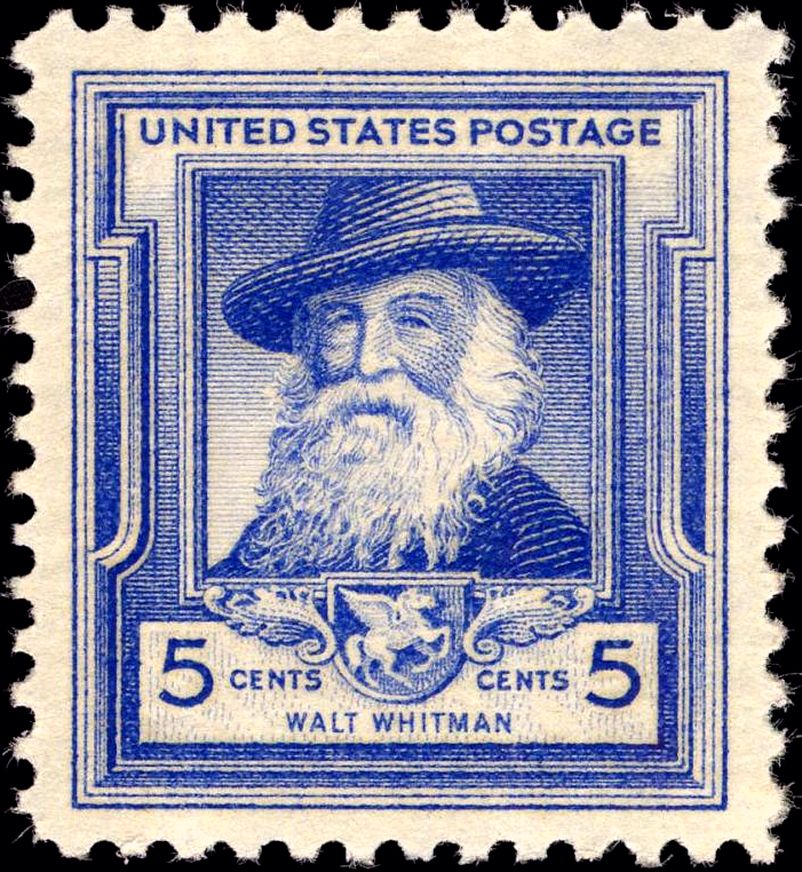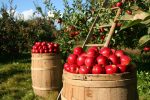It’s late June, so why not read this tiny homeschool poem aloud with your students this week. It’s a famous one-minute “photograph” taken right at this time of year more than a century ago, by the British poet Edward Thomas (1878–1917).
Adlestrop
Yes, I remember Adlestrop —
The name, because one afternoon
Of heat the express-train drew up there
Unwontedly. It was late June.The steam hissed. Someone cleared his throat.
No one left and no one came
On the bare platform. What I saw
Was Adlestrop — only the name,And willows, willow-herb, and grass,
And meadowsweet, and haycocks dry,
No whit less still and lonely fair
Than the high cloudlets in the sky.And for that minute a blackbird sang
Close by, and round him, mistier,
Farther and farther, all the birds
Of Oxfordshire and Gloucestershire.
This would be a wonderful poem for your high-school or advanced middle-school students to memorize. It has a little bit of rhyme: the second and fourth lines match in each stanza, but not the first and third. Overall it has a fairly prose-y feel because it has a lot of enjambment, and that’s the key to reading it well.
There’s a touch of tricky vocabulary to investigate in your family dictionary. Unwontedly is a beautiful word to learn. Wont is not to be confused with won’t or want, and it’s most often heard today in the phrase “as is our wont” (“as is our custom” or “as is our habit”). The express train would ordinarily go directly to the next major station, so its brief stop at the minor Adlestrop platform was un-wonted, that is, un-usual or not customary. And the wildflowers and the haycocks in the nearby fields that were no whit less still than the little clouds in the sky were not one bit less still, or more naturally in prose, just as still.
![[Adlestrop]](https://riverhouses.org/wp-content/uploads/2024/06/adlestrop-station.jpg)
The Eurasian Blackbird (Turdus merula) is very like our American Robin (Turdus migratorius) both in its habits and in its cultural role in its native territory. And like our American Robin, it’s a familiar singer. Can you hear its voice by the Adlestrop station?
More than a hundred years ago a train stopped for just a moment next to an empty railway platform in the British countryside, and a bird sang. And readers ever since have been thankful that Edward Thomas was there to record it.
What wonderful words and poetical productions are you and your students examining in your homeschool this Hercules Term? 😊
❡ Of sheriffs and shires: The last line of “Adlestrop” names two of the historic counties of southern England: Oxfordshire and Gloucestershire. Shire — a word many American readers today associate with the popular novels of J.R.R. Tolkien — is generally a synonym of county, so Oxford-shire is the county of Oxford and Gloucester-shire is the county of Gloucester. In the United States we have ordinarily used the term county rather than shire to refer to territorial subdivisions, although shire does persist in various contexts here and there (as it does of course in the great state of New Hamp-shire). In American English the most common derivative of shire is the word sheriff: a sheriff is a shire-reeve, the historic title of the royal officer with jurisdiction over a shire. The corresponding historic title, used mainly in Continental Europe, for the officer with jurisdiction over a county is — you guessed it — a count. 🧛♂️
❡ Making a new friend: When you introduce your students to a new poem, especially one in a traditional form, take your time, and don’t worry about “getting” everything right away. A good poem is a friend for life, and as with any friend, it takes several meetings to get acquainted. Before you even start to think about meaning, take a look at the poem’s structure. How many lines does it have? Are the lines grouped into stanzas? How many lines in each stanza? How many syllables in each line? Many traditional poems are highly structured and fit together in an almost mathematical way, which you can discover by counting. Do the lines rhyme? What is the rhyme scheme (ABAB, AABA, ABCD, or something else)? By uncovering these details of structure your students will come to appreciate good poems as carefully crafted pieces of literary labor. 📖
❡ And for that minute a blackbird sang: If a special line or turn of phrase happens to strike you in one of our weekly poems, just copy it onto your homeschool bulletin board for a few days and invite your students to speak it aloud — that’s all it takes to begin a new poetical friendship and learn a few lovely words that will stay with you for life. 🚂
❡ Come, here’s the map: Your recommended family atlas may not include the tiny village of Adlestrop (pop. 120), but it will show your students the location of the counties of Oxfordshire and Gloucestershire in southern England. 🗺
❡ This is a printable lesson: Down at the bottom of this post you’ll find a custom “Print” button that will let you create a neat and easy-to-read copy of this little lesson, and it will even let you resize or delete elements that you may not want or need (such as images or footnotes). Give it a try today! 🖨
❡ Literary lives: The website of the Poetry Foundation includes biographical notes and examples of the work of many important poets (including Edward Thomas) that are suitable for high school students and homeschool teachers. ✒️
❡ Comparative literature: If you have advanced high schoolers in your home academy, one of the best ways to get them to think critically about literature is to have them compare and contrast different works on similar themes. After they’ve talked with you for a while about “Adlestrop,” invite them to read two other relatively short poems: Thomas Hardy’s “Channel Firing” and Richard Eberhart’s “The Groundhog” (which, as it happens, is also set in June). A key point of comparison among all three of these poems is the way they end. How does the ending relate to the main body of the text in each poem? 🔍
❡ Here, said the year: This post is one of our regular homeschool poems-of-the-week. Print your own River Houses Poetry Calendar to follow along with us as we visit fifty of our favorite friends over the course of the year, and add your name to our River Houses mailing list to get posts like these delivered right to your mailbox every week. 📫
❡ Homeschool calendars: We have a whole collection of free, printable, educational homeschool calendars and planners available on our main River Houses calendar page. They will help you create a light and easy structure for your homeschool year. Give them a try today! 🗓
❡ Support our work: If you enjoy our educational materials, please support us by starting your regular Amazon shopping from our very own homeschool teaching supplies page. When you click through from our page, any purchase you make earns us a small commission at no extra cost to you. Thank you for helping us to keep going and growing! 🛒
❡ Join us! The aim of the River Houses project is to create a network of friendly local homeschool support groups — local chapters that we call “Houses.” Our first at-large chapter, Headwaters House, is now forming and is open to homeschoolers everywhere. Find out how to become one of our founding members on the Headwaters House membership page. 🏡




